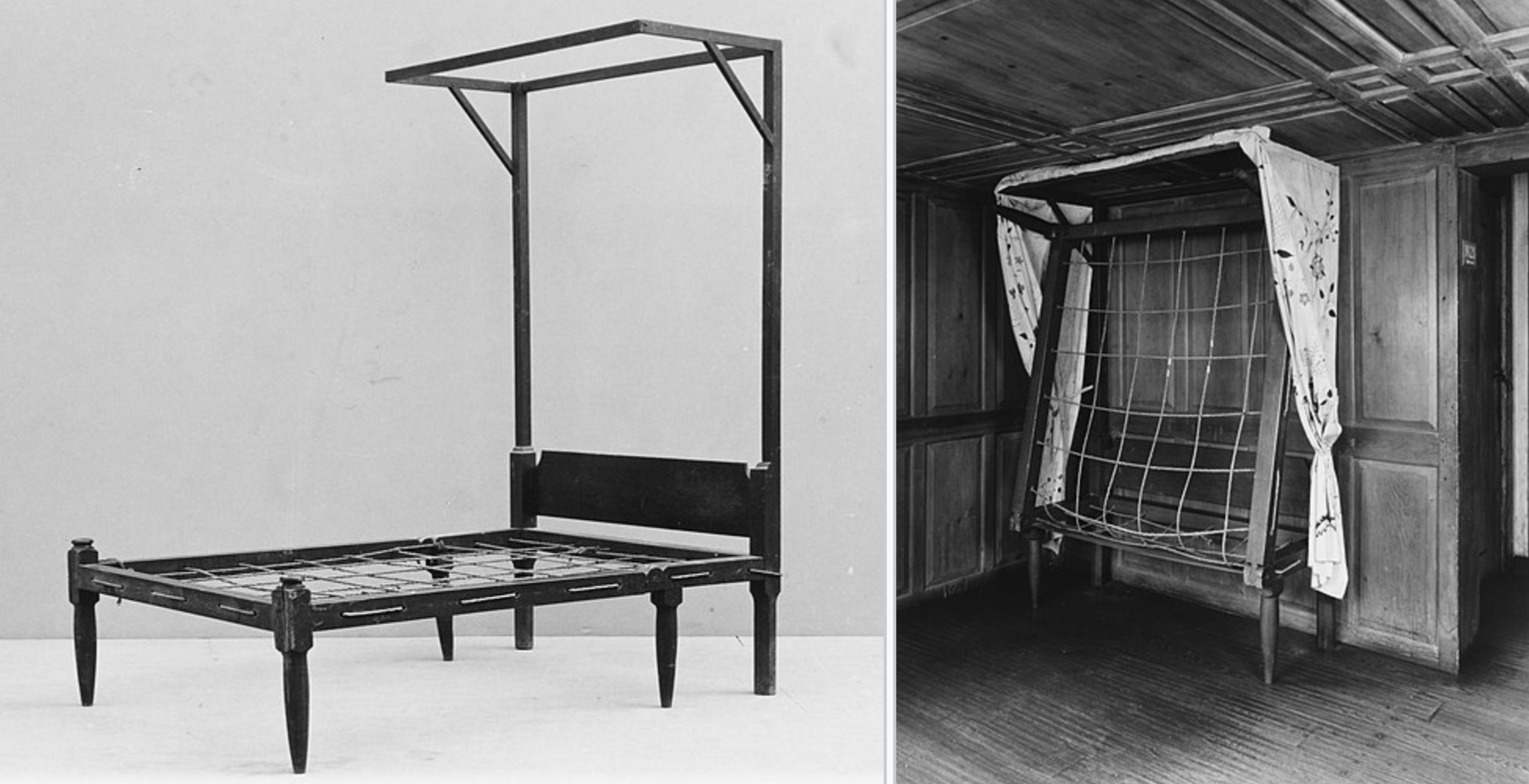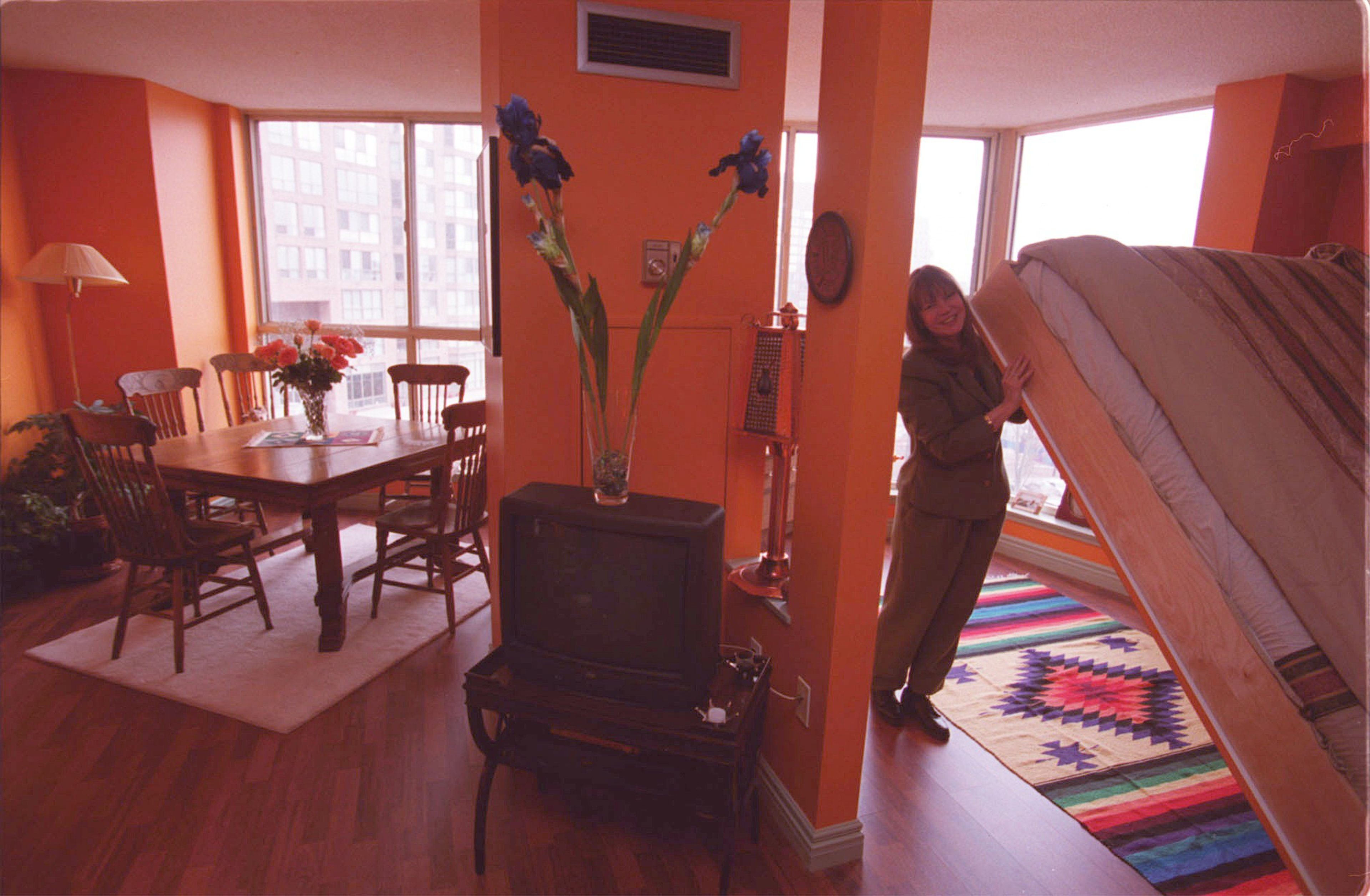This installment of Ask the Standard is in response to a reader’s question about the San Francisco origins of the Murphy bed.

Maybe it’s no coincidence that the inventor of the Murphy bed—that ingenious, early 20th century space-saving invention many of us know from the movies (opens in new tab)—grew up on a farm.
Born in a gold-mining town outside Stockton in 1876, William Lawrence Murphy moved to San Francisco around the turn of the 20th century to pursue an opera singer who was out of his league.
Murphy met Gladys Kaighin while she was vacationing with her family in the mountains. You know what they say: Opposites attract.
As the legend goes, the young Murphy needed a way to entertain his sweetheart at his tiny Bush Street studio apartment, but inviting a lady—especially one from a prominent San Francisco family—into what was effectively his bedroom would have been a scandal.
Enter Murphy’s stroke of brilliance. With a bed that disappeared into a wall, his apartment transformed into a proper living room.

While this love story gets a lot of airtime (opens in new tab), there may have been a simpler explanation: Murphy wanted more space.
“I think he foresaw a need, as people moved from wide open spaces into cramped city quarters,” said the inventor’s son, Bill Murphy, talking to a San Francisco Examiner reporter in 1978 for a story about the history of the Murphy bed.
The popularity of Murphy beds reached its peak in the 1920s, when they became (opens in new tab) a selling point in Manhattan apartments. But it was Hollywood that recognized the comic potential of a bed that disappears into a wall, ever since Charlie Chaplin had his five-minute-long tussle with one in the 1916 silent slapstick short “One A.M.” (opens in new tab)

In the decades since, Murphy beds have appeared with characters from James Bond (opens in new tab) to Kermit the Frog. In real life, (opens in new tab)accidents involving Murphy beds are exceedingly rare, though they have happened (opens in new tab). An internet rumor that made the rounds about a decade ago held that a missing grandmother (opens in new tab) in Liverpool, England, was found mummified inside her Murphy bed, which had folded up while she was asleep.
But while the bed was certainly Murphy’s most famous invention, it wasn’t the only space-saver he dreamed up. His son said he also devised an ironing board that folded away as well as a dinette set that tucked out of sight.
A rough-and-tumble frontiersman, Murphy tried everything from gold-seeking to sheriffing to stagecoach-running before marrying his San Francisco soprano in 1912. For someone accustomed to wide open spaces, the confined quarters of an urban studio apartment were likely a tough adjustment.
The realities of urban apartment living haven’t changed much over the last century. As a result, Murphy beds are still on sale everywhere from Costco (opens in new tab) to California Closets (opens in new tab).
